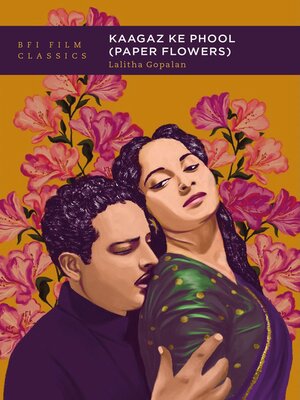
Sign up to save your library
With an OverDrive account, you can save your favorite libraries for at-a-glance information about availability. Find out more about OverDrive accounts.
Find this title in Libby, the library reading app by OverDrive.



Search for a digital library with this title
Title found at these libraries:
| Library Name | Distance |
|---|---|
| Loading... |
Guru Dutt's final film as a director, Kaagaz Ke Phool/Paper Flowers (1959), follows the successful film-maker Suresh Sinha (played by Dutt himself) as rumours of his affair with his actress Shanti (Waheeda Rehman) lead him to lose his family, descend into alcoholism and ultimately retreat from the film industry. Initially met with critical and commercial failure, the film is now revered for its technical prowess and considered one of the finest self-reflexive works in Indian cinema.
Lalitha Gopalan explores Kaagaz's innovative visual style, being the first Indian film shot in CinemaScope, highlighting cinematographer V. K. Murthy's essential contribution. She also analyses the soundtrack, composed by S. D. Burman with lyrics by Kaifi Azmi, examining the now-classic picturisations of songs such as 'Waqt Ne Kiya Kya Haseen Sitam'. Drawing on interviews with practitioners and people close to Dutt, Gopalan reconstructs the original contexts of the film's production and reception. Finally, using Kagaaz as a lens, she assesses Dutt's influence on popular Indian cinema during the 1950s, as well as on global film melodrama more broadly.
Lalitha Gopalan explores Kaagaz's innovative visual style, being the first Indian film shot in CinemaScope, highlighting cinematographer V. K. Murthy's essential contribution. She also analyses the soundtrack, composed by S. D. Burman with lyrics by Kaifi Azmi, examining the now-classic picturisations of songs such as 'Waqt Ne Kiya Kya Haseen Sitam'. Drawing on interviews with practitioners and people close to Dutt, Gopalan reconstructs the original contexts of the film's production and reception. Finally, using Kagaaz as a lens, she assesses Dutt's influence on popular Indian cinema during the 1950s, as well as on global film melodrama more broadly.







